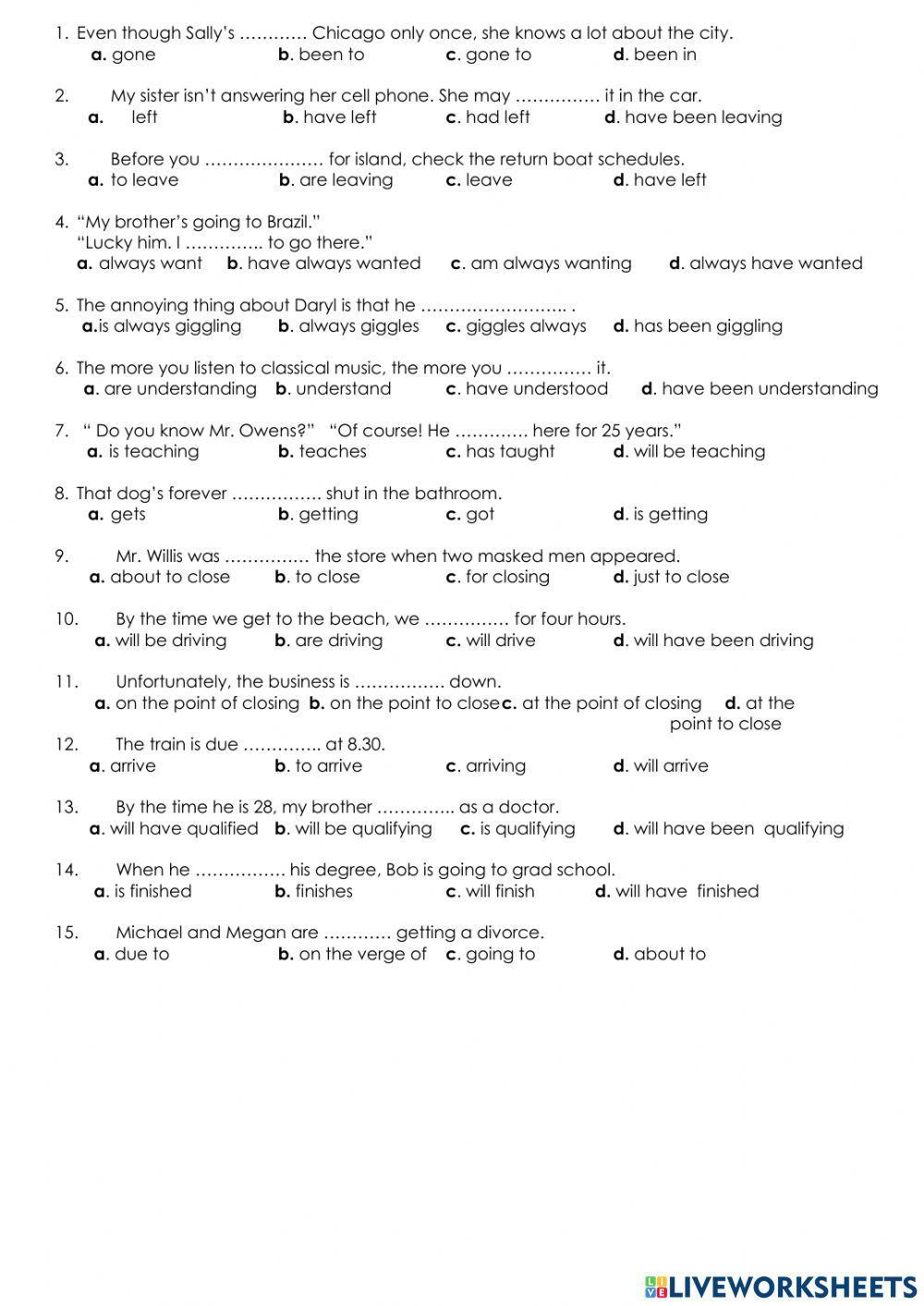
The Apex of Language Learning: Unlocking Mastery with C2 ESL Worksheets
In the intricate journey of mastering a foreign language, reaching the C2 level, as defined by the Common European Framework of Reference for Languages (CEFR), represents the pinnacle of achievement. It signifies near-native fluency, an almost effortless understanding of complex and nuanced language, and the ability to express oneself spontaneously, precisely, and with a high degree of nuance in virtually any situation. While general language exposure, immersive experiences, and extensive reading are crucial for C2 attainment, the targeted practice offered by C2 ESL worksheets plays a uniquely powerful role in refining the subtlest aspects of language and bridging the final, often challenging, gap to true mastery.
Understanding the C2 Level: Beyond Fluency
Before delving into the specifics of C2 ESL worksheets, it’s essential to grasp the depth and breadth of the C2 proficiency level. At this stage, learners are expected to:

- Comprehend with Ease: Understand virtually everything heard or read, including abstract, structurally complex, or highly idiomatic language. This includes recognizing implicit meaning, attitudes, and nuances.
- Summarize and Reconstruct: Summarize information from various spoken and written sources, reconstructing arguments and accounts in a coherent presentation.
- Express Spontaneously and Precisely: Express themselves spontaneously, very fluently, and precisely, differentiating finer shades of meaning even in complex situations.
- Handle Complex Debates: Engage in complex and challenging debates, arguments, and presentations, using appropriate register and style.
- Command a Wide Vocabulary: Possess a broad lexical repertoire, including idiomatic expressions, phrasal verbs, and collocations, and be able to use them accurately and appropriately.
- Master Grammatical Structures: Demonstrate consistent control of complex grammatical structures, rarely making errors and being able to correct them if they occur.
- Adapt Language for Context: Use language flexibly and effectively for social, academic, and professional purposes, adapting style to suit the context and audience.
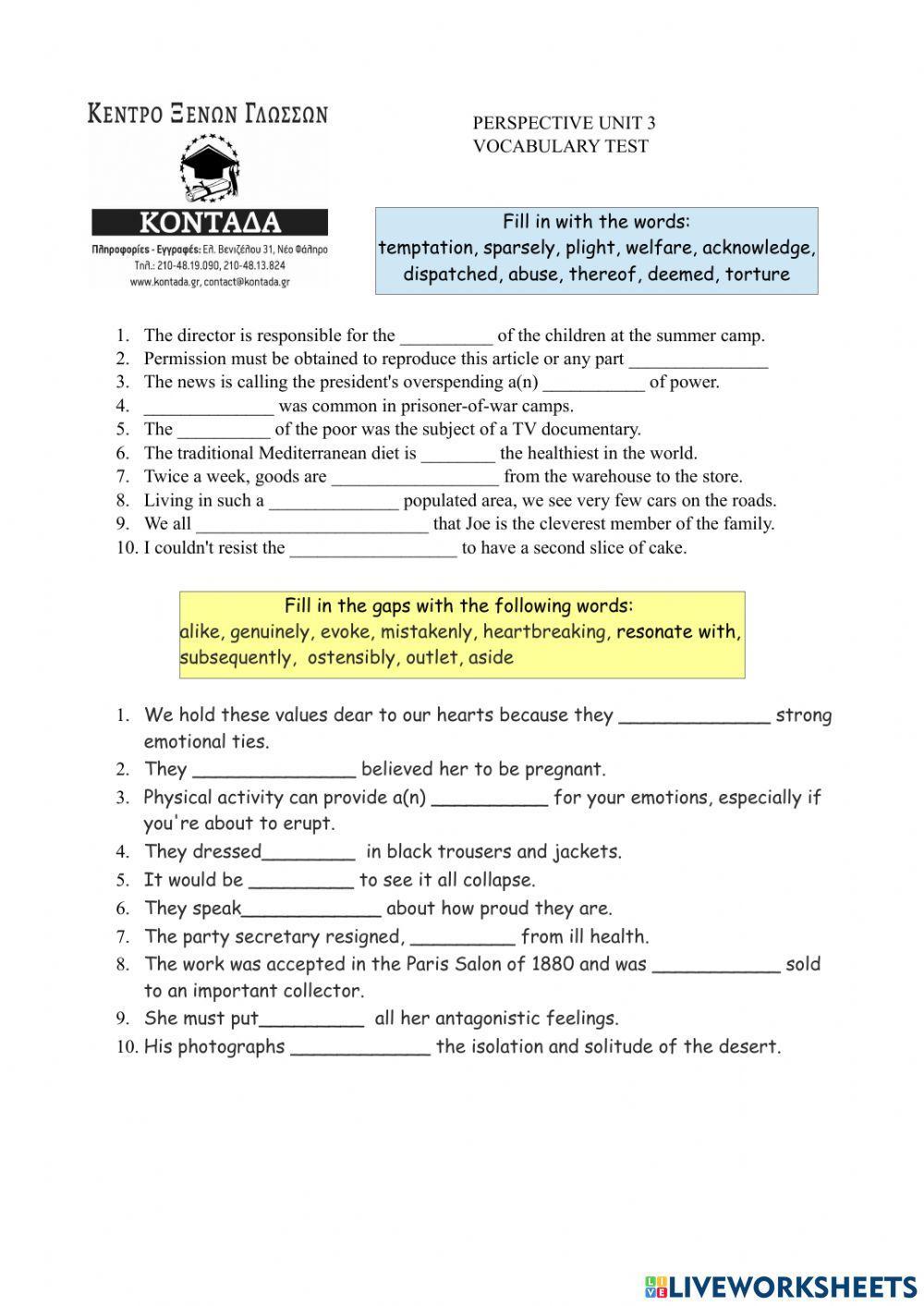
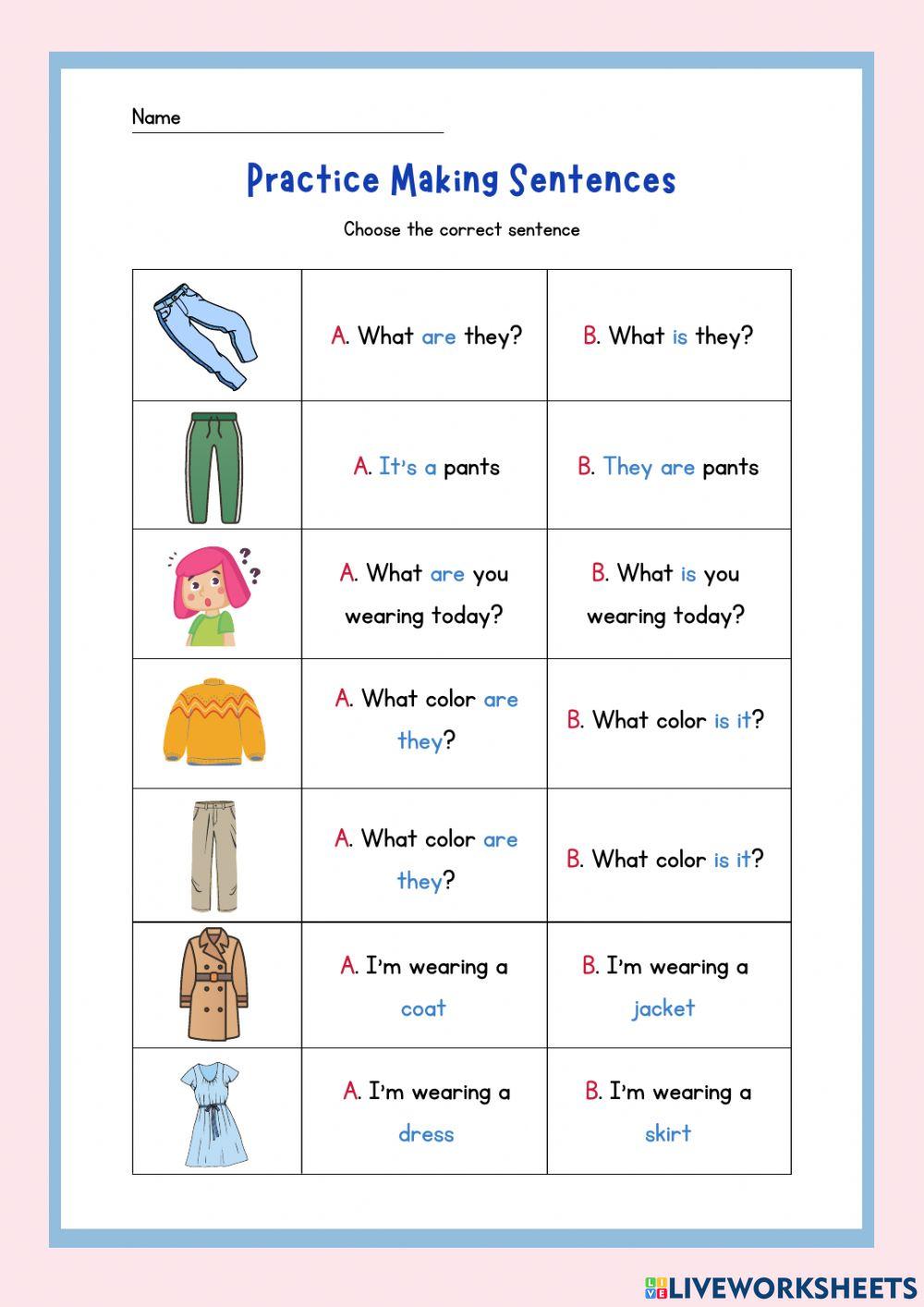
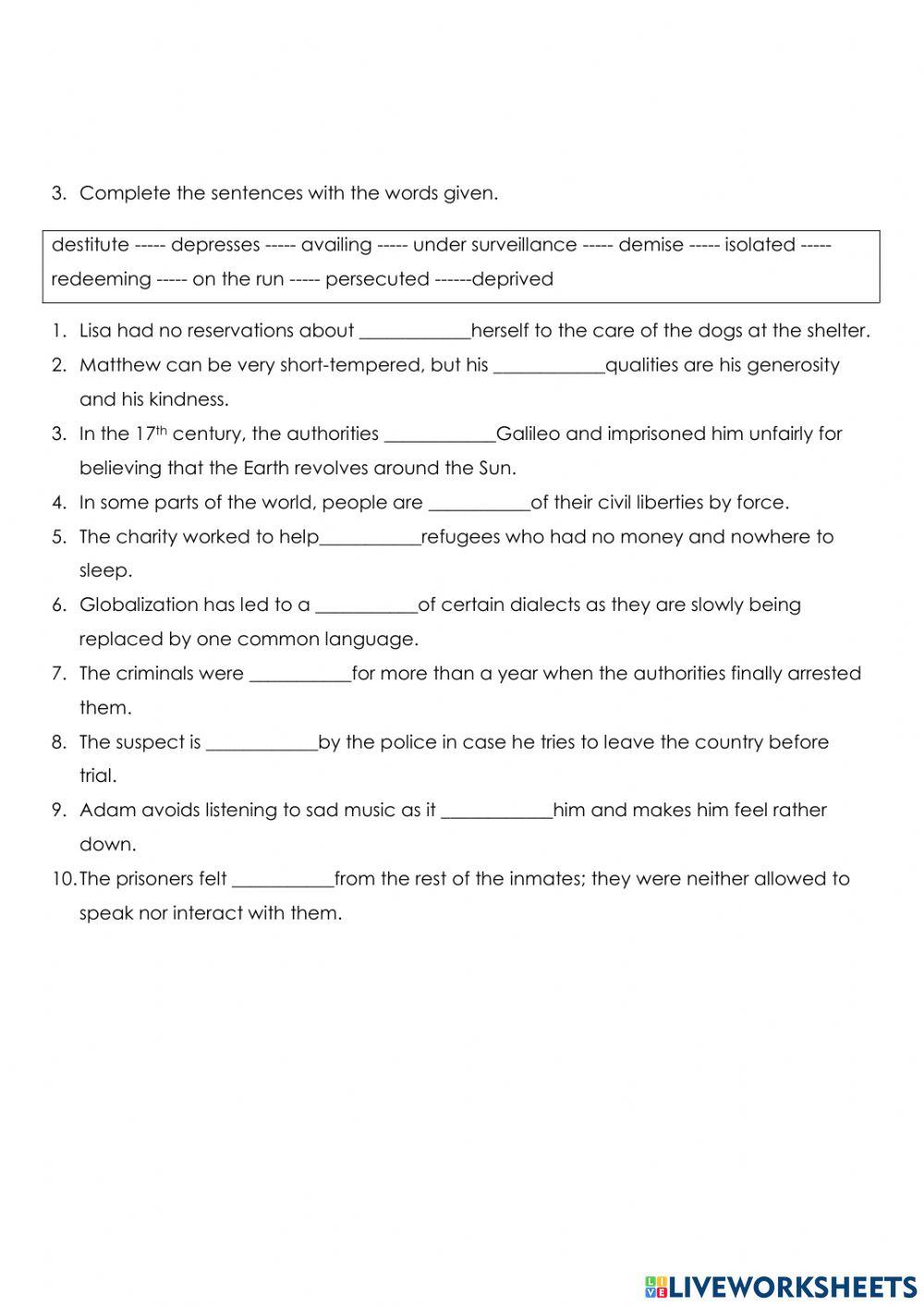

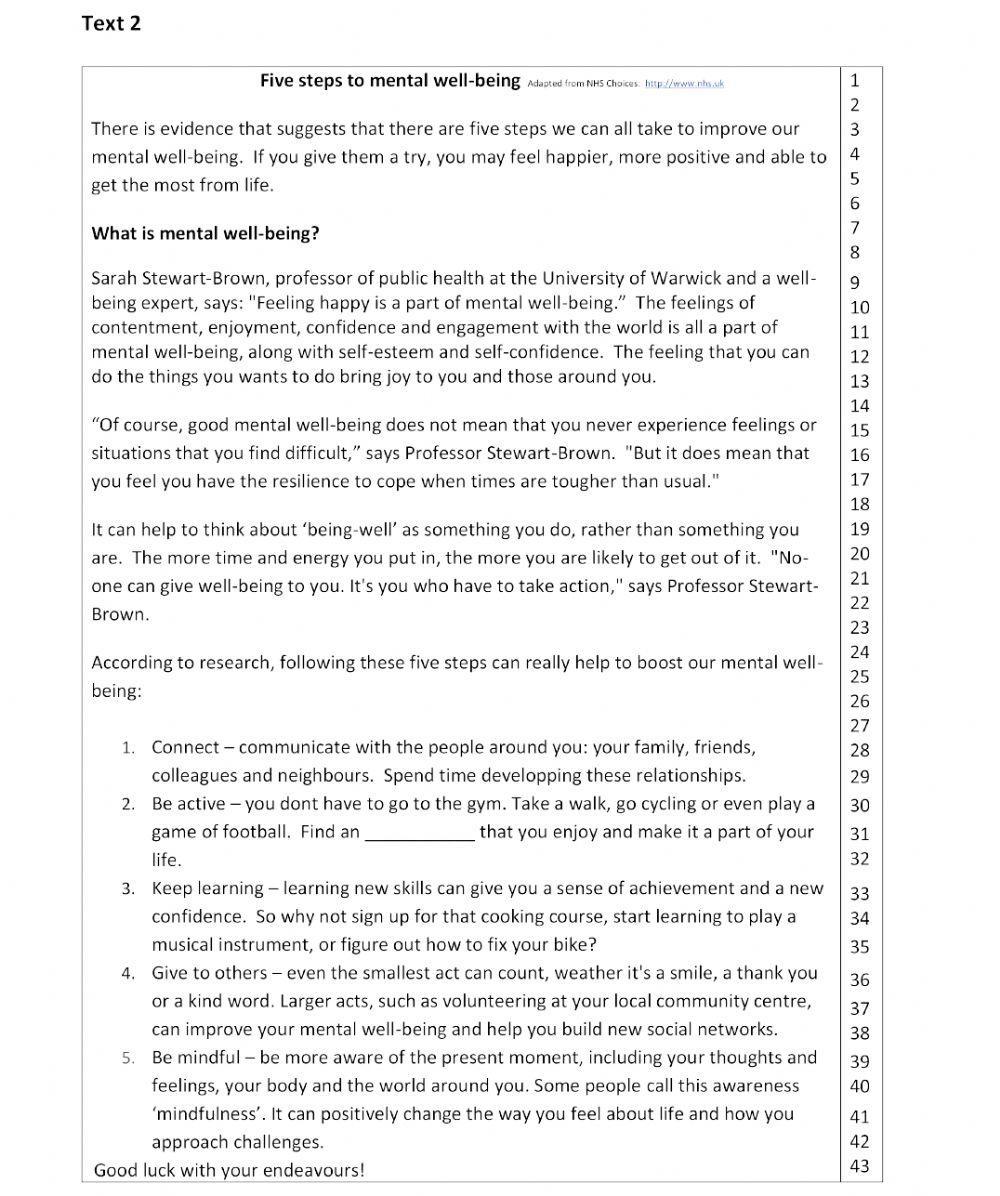
Achieving this level is not merely about accumulating more vocabulary or understanding more grammar rules; it’s about the sophisticated application of language, the intuitive grasp of pragmatics, and the ability to manipulate language with a native-like ease and precision. This is where well-designed C2 ESL worksheets become indispensable tools.
The Unique Role and Importance of C2 ESL Worksheets
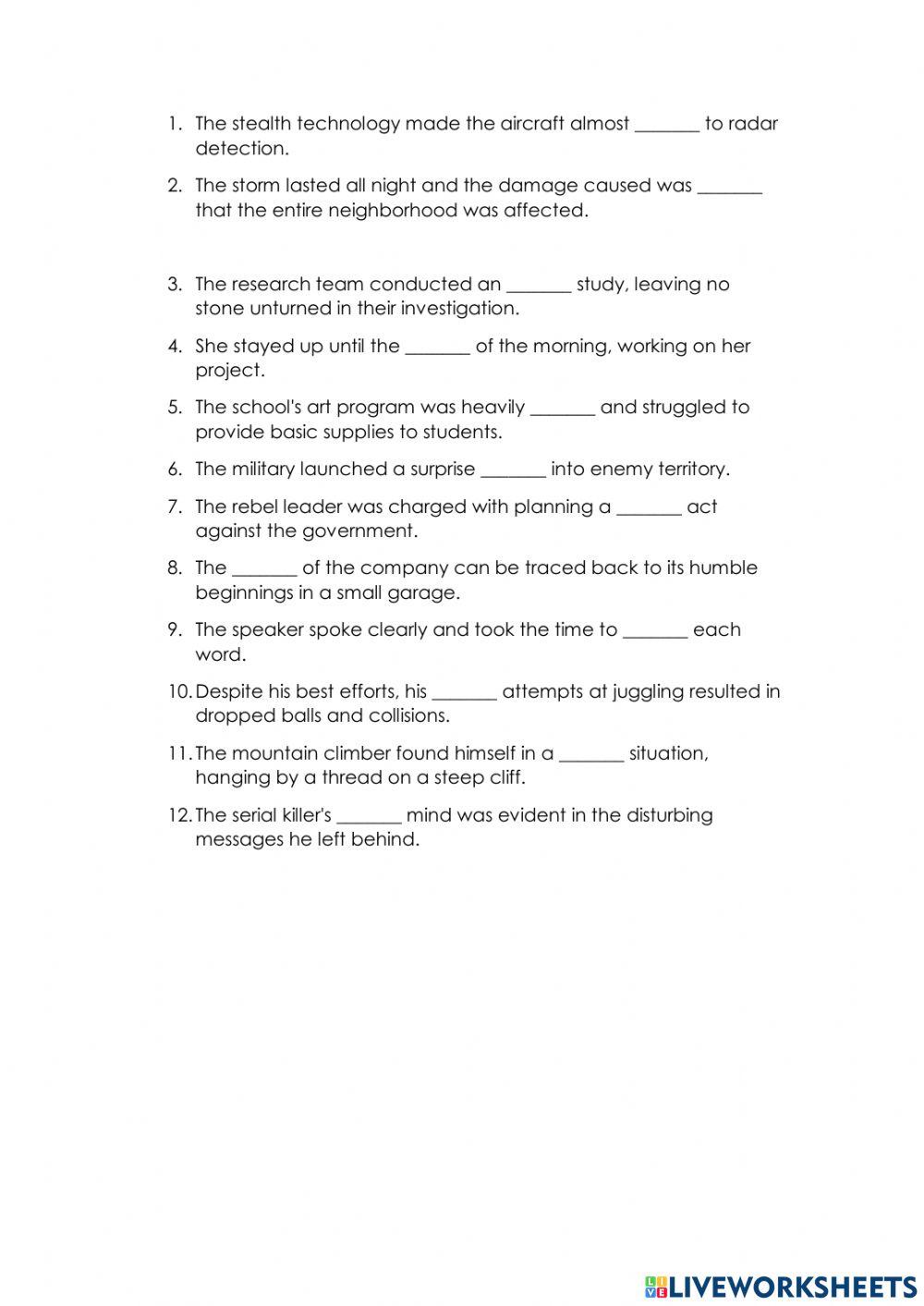
Unlike worksheets for lower CEFR levels that might focus on foundational grammar points or basic vocabulary acquisition, C2 ESL worksheets are designed for refinement, nuance, and the eradication of subtle errors that even advanced learners often make. They serve several critical purposes:
- Targeting the "Last Mile" Errors: At C2, errors are rare, but when they occur, they are often subtle issues of collocation, register, nuance in synonym choice, or highly complex grammatical structures. Worksheets can specifically isolate these areas for focused practice.
- Deepening Understanding of Nuance: Language at C2 is about what isn’t said, the implied meaning, the subtle differences between seemingly similar words, and the appropriate use of idiom. Worksheets can present scenarios that challenge learners to discern these fine distinctions.
- Enhancing Pragmatic Competence: Understanding how language is used in real-world social contexts – politeness, indirectness, humor, sarcasm, formal vs. informal register – is crucial for C2. Worksheets can simulate these interactions and require learners to choose or produce contextually appropriate language.
- Expanding Academic and Professional Register: For many C2 learners, the goal is to use English in academic or professional settings. Worksheets can expose them to specialized vocabulary, formal writing styles, and complex argumentative structures required in these domains.
- Consolidating Advanced Structures: While C1 learners might recognize complex structures, C2 learners need to produce them effortlessly and accurately. Worksheets provide structured opportunities for this production.
- Promoting Critical Thinking: C2 materials often involve complex texts or debates, requiring learners to analyze, synthesize, evaluate, and form well-reasoned arguments. Worksheets can guide this critical engagement.
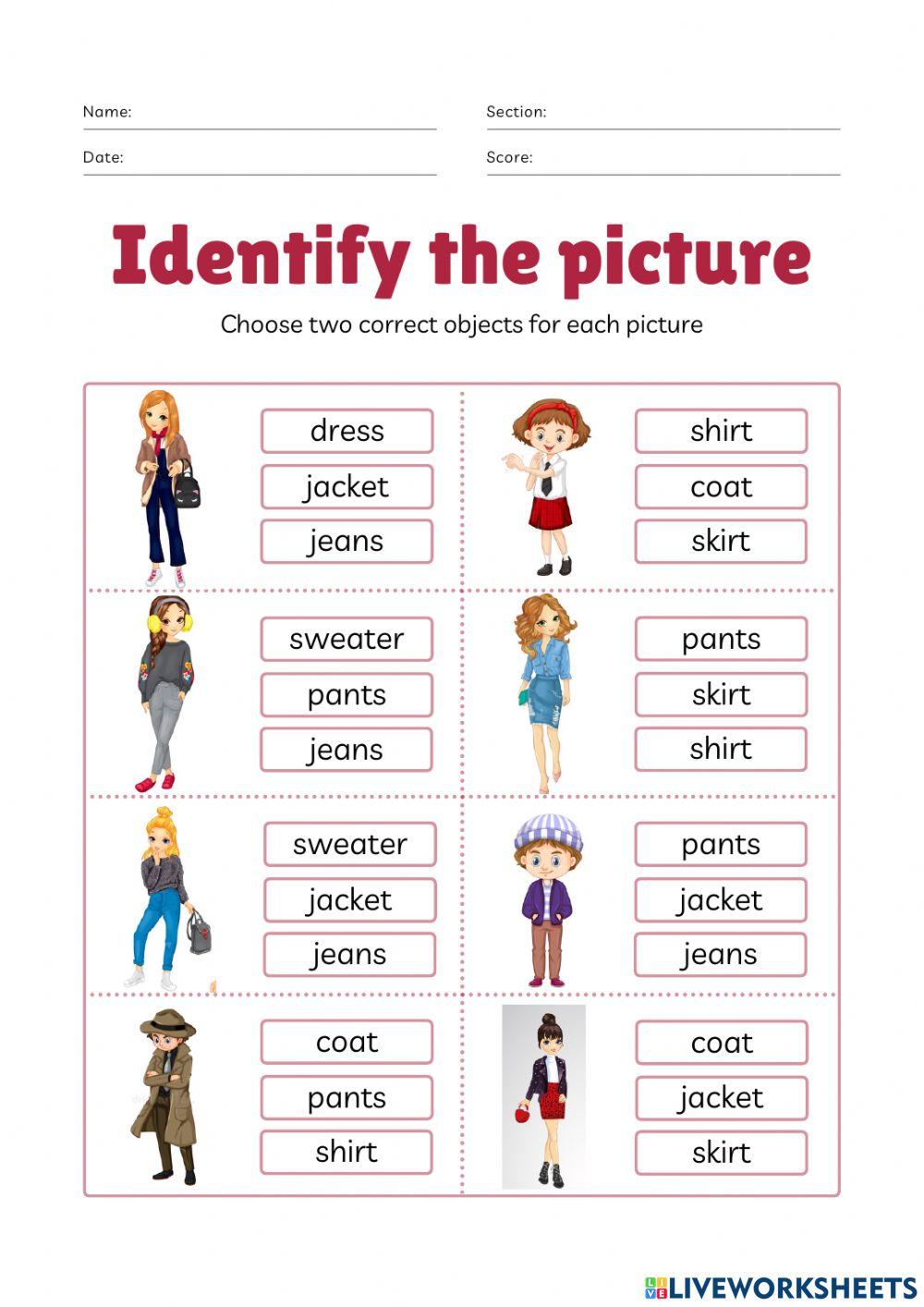
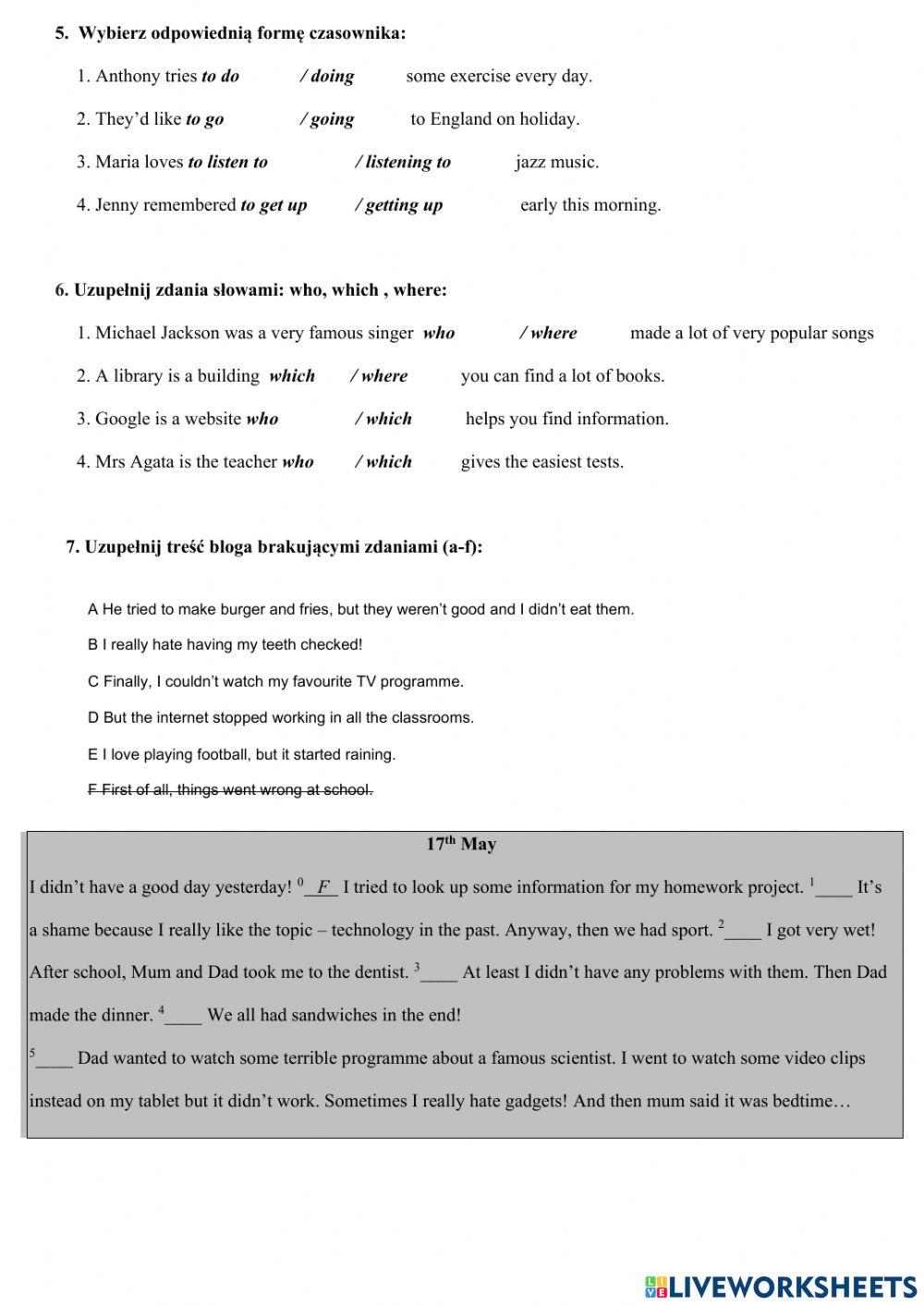
Characteristics and Content of Effective C2 ESL Worksheets
To be truly effective, C2 ESL worksheets must move beyond simplistic exercises and embrace the complexity of the C2 level. Key characteristics and content areas include:
-
Authenticity of Materials:
- Texts: Excerpts from academic journals, sophisticated newspaper articles (e.g., opinion pieces, in-depth analyses), literary works, philosophy texts, official reports, or complex technical documents.
- Audio/Visual: Segments from high-level documentaries, university lectures, political debates, complex interviews, or sophisticated podcasts where speakers use varied accents, pace, and intonation.
- Tasks: Mimic real-world communication scenarios, such as writing a formal proposal, summarizing a dense article, or participating in a nuanced debate.
-
Advanced Vocabulary Focus:
- Collocations: Exercises on specific, less common collocations (e.g., "reign supreme," "unbridled enthusiasm," "stark contrast").
- Idioms and Phrasal Verbs: Not just understanding, but accurate and appropriate usage in context, including their nuanced meanings and potential for misinterpretation.
- Nuanced Synonyms/Antonyms: Distinguishing between words like "imply," "infer," and "allude," or "disdain," "contempt," and "scorn."
- Register-Specific Lexis: Vocabulary suitable for academic, formal, or highly informal contexts, and understanding when to use each.
- Word Formation: Advanced prefixes, suffixes, and root words to deduce meaning and expand vocabulary.
-
Sophisticated Grammar in Context:
- Complex Sentence Structures: Practice with inversion, conditional clauses (especially mixed and advanced types), reduced relative clauses, participle clauses, and appositives.
- Subjunctive Mood: Beyond basic "if I were you," focusing on its use in formal recommendations, hypothetical statements, or expressions of desire/necessity.
- Passive Voice: Not just formation, but understanding its rhetorical effect, particularly in academic and formal writing.
- Cohesion and Coherence Devices: Exercises on advanced discourse markers, linking words, and transitional phrases that create sophisticated flow in written and spoken discourse.
- Error Correction: Identifying and correcting subtle grammatical errors that might still occur at C2, often related to agreement, parallel structure, or precise tense usage in complex narratives.
-
Pragmatics and Sociolinguistics:
- Register Awareness: Identifying and producing language appropriate for different levels of formality, from highly academic to casual banter.
- Implied Meaning: Analyzing texts or dialogues to infer speaker intent, sarcasm, irony, or underlying assumptions.
- Politeness Strategies: Understanding direct vs. indirect requests, hedging, and other strategies for sensitive communication.
- Cultural Nuances: Exploring how cultural context influences communication patterns and expressions.
-
Integrated Skills and Critical Thinking:
- Reading Comprehension: Beyond simple information extraction, tasks might involve analyzing authorial bias, identifying logical fallacies, synthesizing information from multiple sources, or critically evaluating an argument.
- Listening Comprehension: Tasks requiring learners to discern subtle opinions, follow complex arguments with multiple speakers, or identify nuances in tone and emotion.
- Writing Tasks: Essay prompts requiring complex argumentation, synthesis of research, formal reports, or creative writing that demonstrates mastery of style and register.
- Speaking Prompts: Role-plays involving complex social or professional scenarios, debates on abstract topics, or presentations requiring sophisticated rhetorical skills.
Designing and Utilizing C2 ESL Worksheets Effectively
For teachers, designing effective C2 ESL worksheets requires deep linguistic knowledge and creativity. For learners, utilizing them optimally demands dedication and a reflective approach.
For Teachers:
- Curate Authentic Materials: Scour reputable news sources (e.g., The Economist, The Guardian, The New York Times), academic journals, literary works, and TED Talks for challenging and engaging content.
- Focus on Process, Not Just Product: Encourage learners to articulate why an answer is correct, discuss alternatives, and explain their reasoning.
- Provide Detailed Feedback: At C2, general feedback is insufficient. Pinpoint specific errors, suggest alternative phrasing, and explain the nuanced differences.
- Integrate Skills: A reading passage might lead to a discussion, which then leads to a written response, allowing for natural skill integration.
- Encourage Peer Feedback: C2 learners can benefit from analyzing each other’s work, fostering a deeper understanding of accuracy and appropriateness.
For Learners:
- Approach with a Critical Eye: Don’t just complete the exercises; analyze why you chose a particular answer or made a specific error.
- Go Beyond the Worksheet: If a worksheet introduces a new idiom or grammatical structure, actively seek it out in other authentic materials (books, films, podcasts) to see it in different contexts.
- Review and Revisit: Mastery comes from repeated exposure and practice. Revisit challenging worksheets after some time to see if your understanding has deepened.
- Use a Reference Grammar/Dictionary: For C2, an advanced learner’s dictionary (like Oxford Learner’s Dictionaries) and a comprehensive grammar reference are invaluable for clarifying nuances.
- Seek Feedback: Actively ask your teacher or a native speaker for feedback on your spoken and written output, especially when applying new concepts from worksheets.
Challenges and Considerations
While invaluable, C2 ESL worksheets also present challenges. Finding truly C2-level materials can be difficult, as many resources labeled C1/C2 lean more towards C1. Creating them from scratch is time-consuming and requires significant expertise. Furthermore, motivation can be a factor; at this advanced stage, learners might feel they know "enough," and the subtle distinctions addressed by C2 materials can sometimes feel pedantic if not framed correctly. The key is to emphasize that these nuances are what differentiate a highly proficient non-native speaker from a near-native one, impacting their ability to communicate with ultimate precision and confidence in demanding real-world scenarios.
Conclusion
Reaching the C2 level in English is a remarkable feat, signifying a mastery that allows for almost limitless communication and comprehension. While extensive exposure and immersion are foundational, the targeted and rigorous practice provided by well-crafted C2 ESL worksheets is crucial for polishing, refining, and solidifying this advanced proficiency. They offer the structured environment necessary to tackle the subtle complexities of the English language, from the nuances of vocabulary and grammar to the intricacies of pragmatics and discourse. For both dedicated learners striving for the highest level of linguistic competence and the educators guiding them on this demanding journey, C2 ESL worksheets are not just supplementary materials; they are essential tools for unlocking the full potential of near-native fluency and truly mastering the English language.
